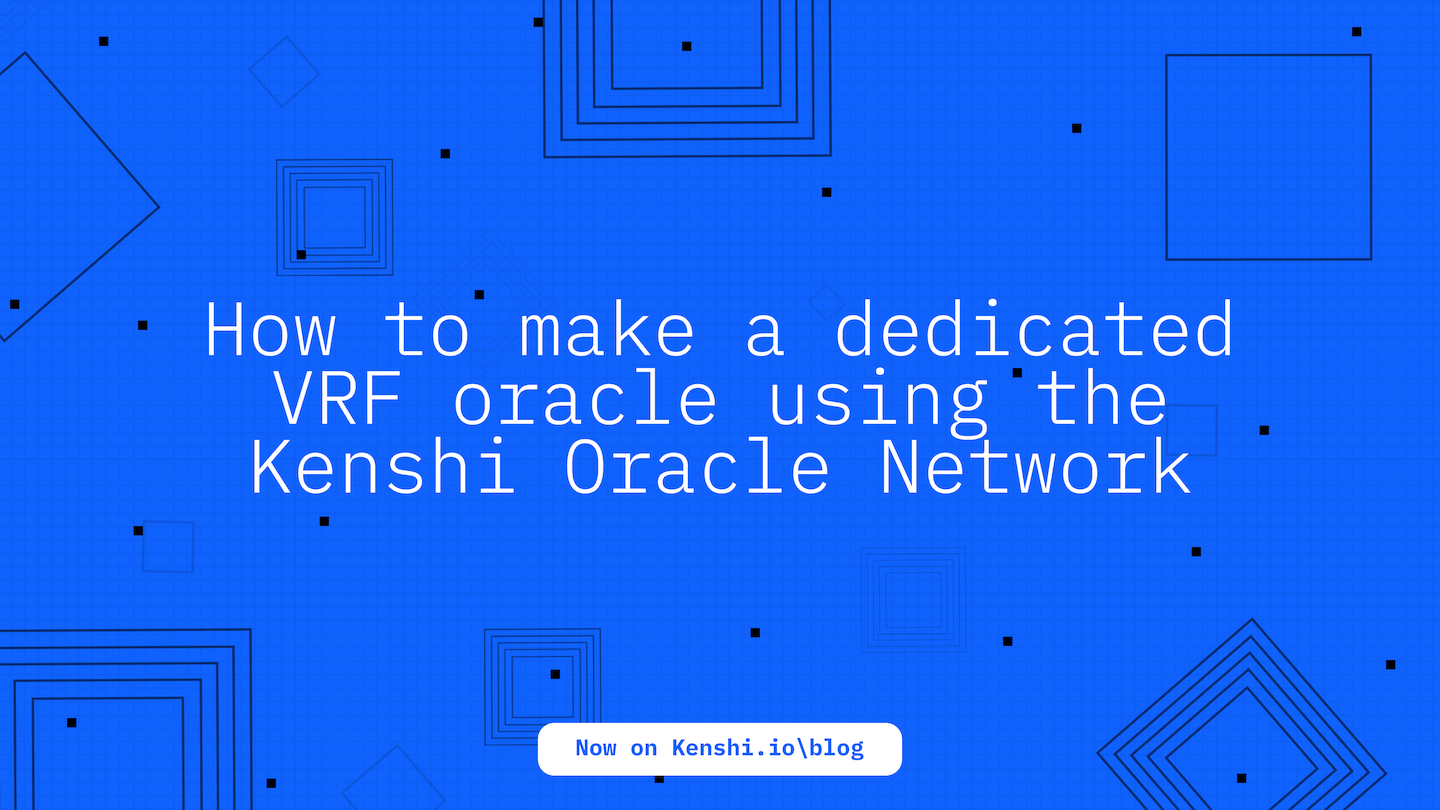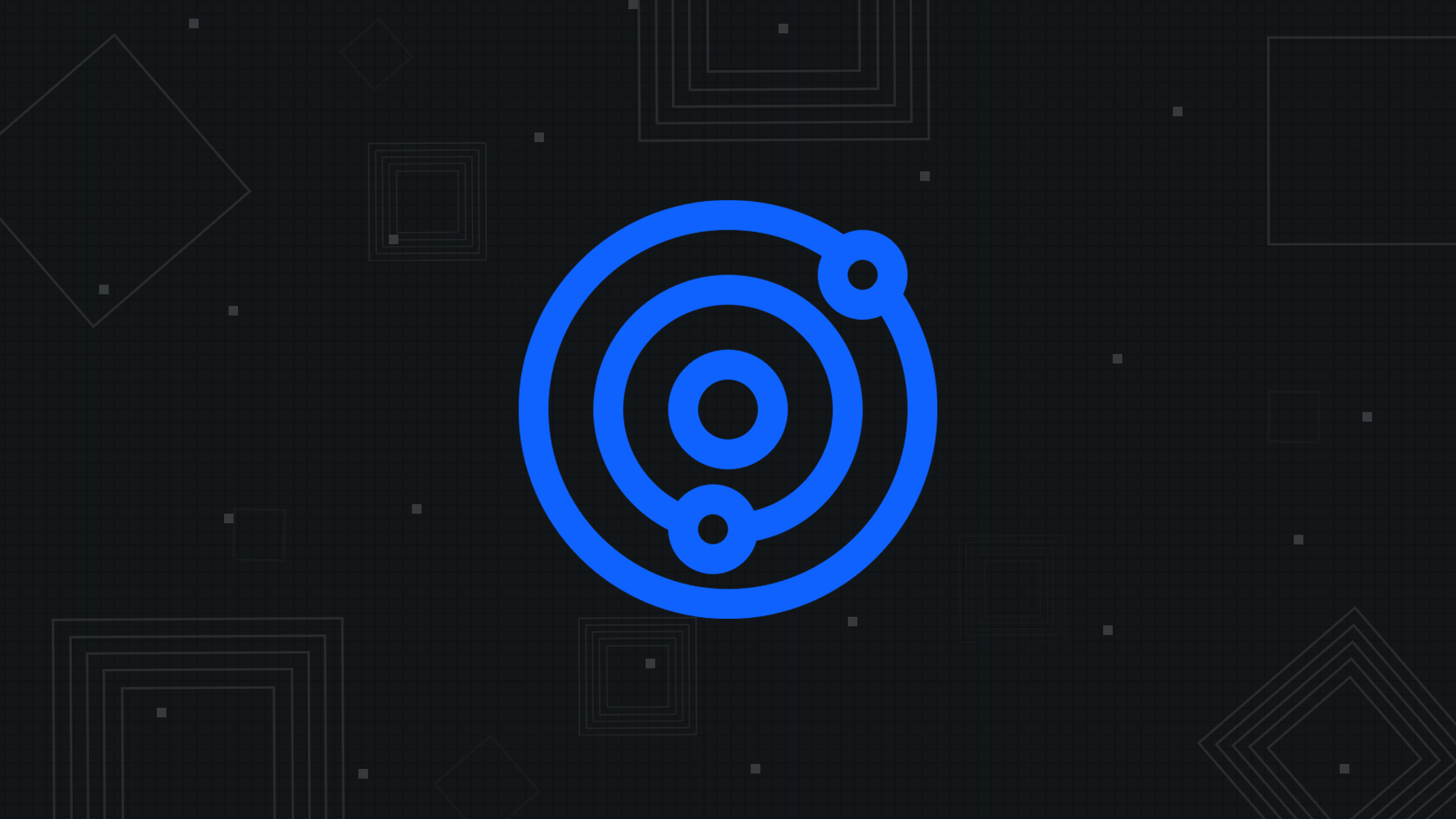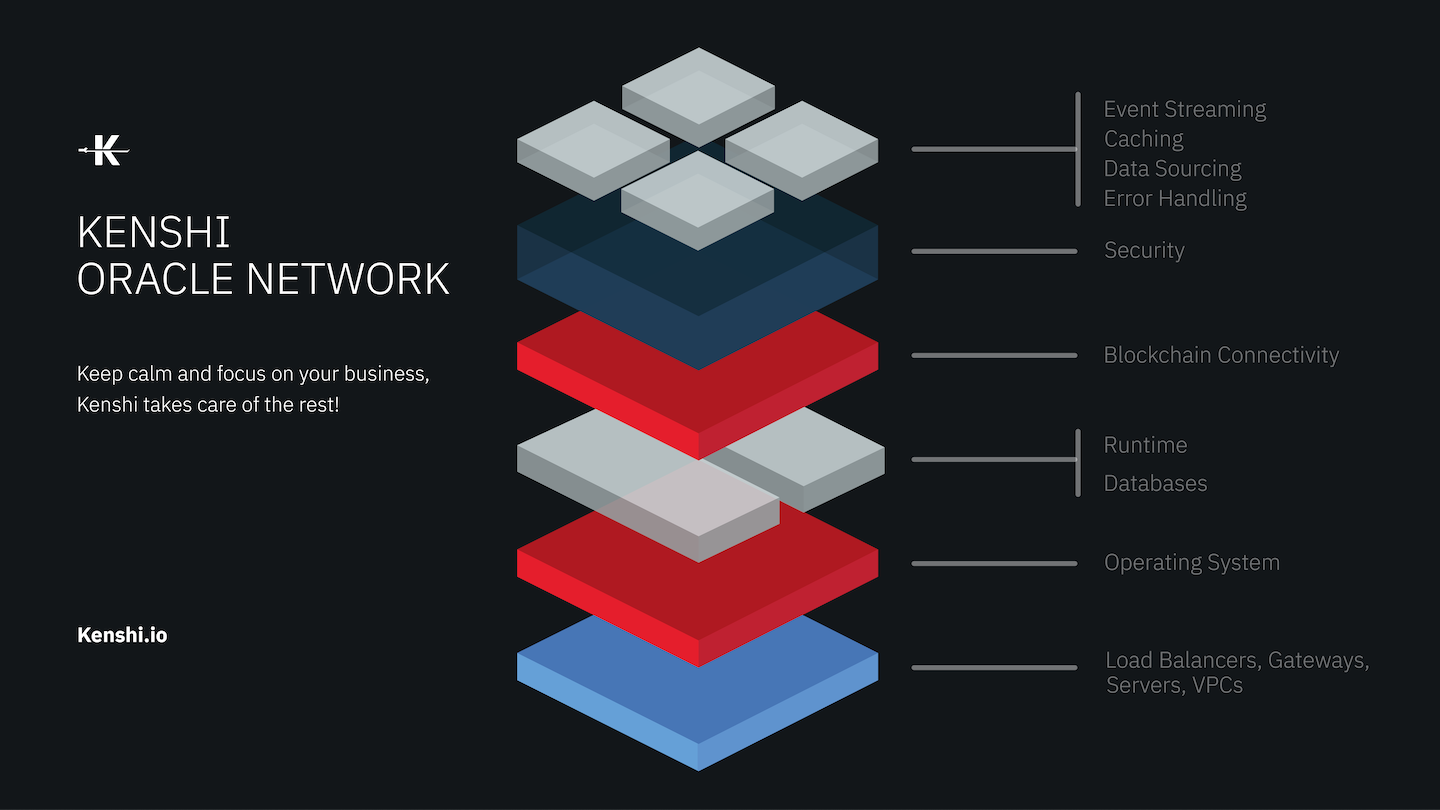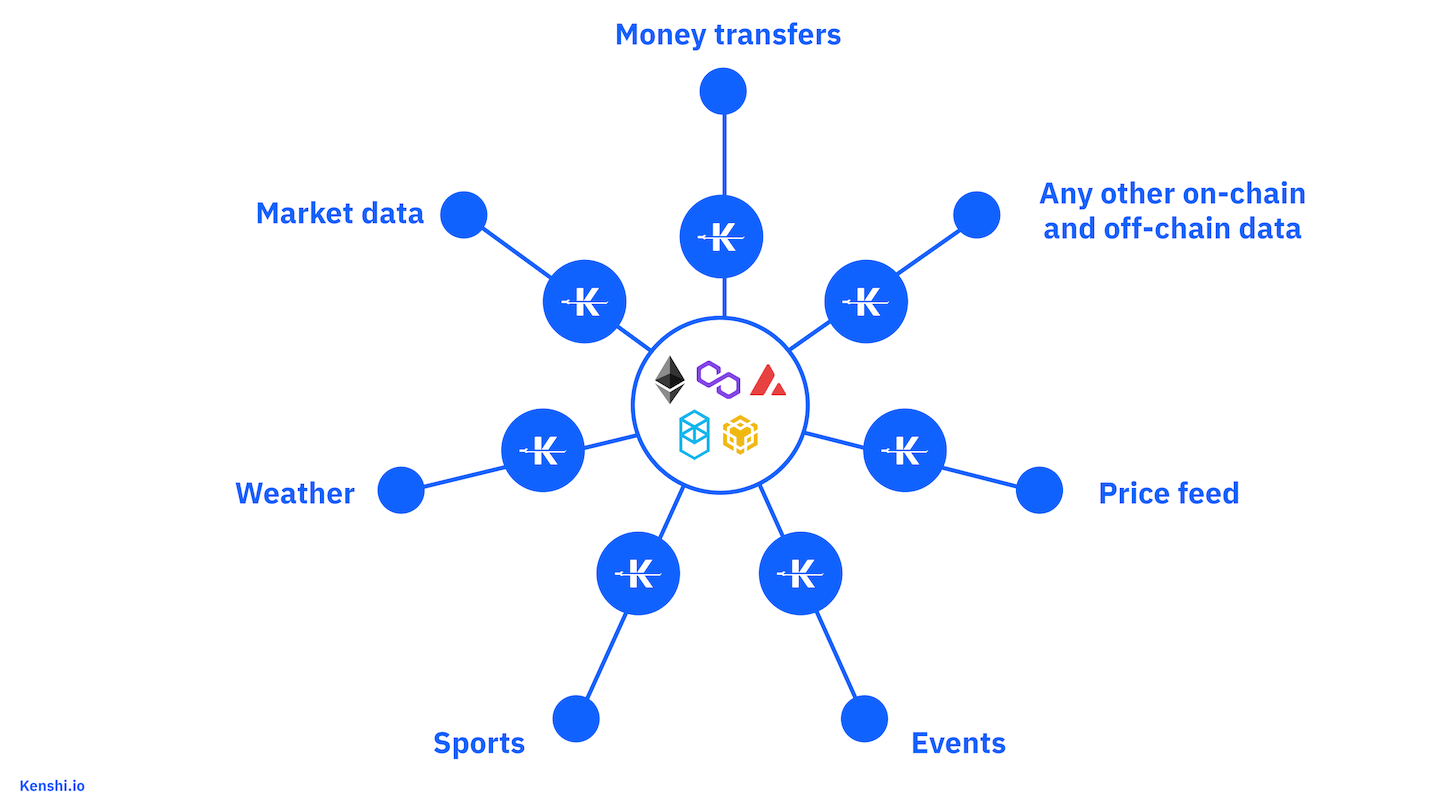Introducing Kenshi ( 🎁 )
In today's article, I will talk about Kenshi. I will briefly cover what Kenshi is, what its purpose is, its products, token economy, and its rewarding testnet.
What is Kenshi?
Kenshi is a full-stack application development platform targeting the blockchain. Kenshi enables fast product development and reduces time to market. Whether you want to index and query blockchain data or deliver data to the blockchain, Kenshi has you covered and enables two-way communication.
The Kenshi Deep Index
Before getting into the subject, I would like to explain what deep index is.
The term "Deep Index" is generally used in financial markets and represents elements that are not measured through an index or indicator, often those that were not previously considered or less tracked. These elements typically complement a broader picture and are used to provide a more comprehensive understanding of a specific sector or market.
The Kenshi Deep Index service allows indexing and querying blockchain data using GraphQL or MQL. The Kenshi Deep Index data cluster geographically distributes your data to guarantee high availability and fast region-independent access times. Kenshi also provides R-API (webhooks) and the Kenshi IoT platform as a part of the Kenshi Deep Index service. Kenshi R-API is a push notification service for the blockchain that delivers events directly to your application endpoint, so you don’t have to keep querying for them. Kenshi IoT SDKs allow using the Kenshi Deep Index services on embedded devices. Builders can use the Kenshi IoT service to develop smart city projects, smart devices, or any other embedded electronics project requiring real-time blockchain data access Developers, pay attention here!!!
Developers, pay attention here!!!
The Kenshi Oracle Network
The Kenshi Oracle Network allows the development, deployment, and operation of custom oracles on various blockchains. With the Kenshi Oracle Network, developers can use the technology of their choice to create custom oracles, allowing them to focus on their business use case instead of solving common oracle development problems. The Kenshi Oracle Network takes care of event sourcing, task queues, security, caching, scaling, nonce management, error management, data delivery, and retries so builders can spend more time on their business logic. Kenshi Oracle Network Blueprints allow developers to bootstrap a custom oracle or deploy a dedicated version of an existing one. Kenshi provides Blueprints for a price feed oracle, a proof of balance oracle, a weather station oracle, and a VRF oracle. Kenshi also provides a simple oracle Blueprint as a starting point for developing more extensive, complex oracles.
The Kenshi Token
The Kenshi token is a utility token that grants users access to the Kenshi ecosystem. The token implements the ERC20 interface, is natively deployed on the Arbitrum One blockchain, and has a 10/10 perfect audit score by Hacken.
Utility
The Kenshi utility token is closely tied to the Kenshi ecosystem. Some of the utilities of this token are:
- Products & Services : The token can be used to unlock access to the products and services provided by Kenshi.
- Voting : The token can be used to vote on community matters, or the direction of the Unchained network. See the Kenshi Engagement Protocol.
- Unchained Nodes : The Unchained protocol implements a Liquid Proof of Stake
- conensus mechanism. Unchained validators stake KNS tokens to improve the security of the Unchained network.
- Unchained Consumers : Consumers use KNS to access validated data stored on the Unchained network. Validators receive these tokens as a reward for running an active node.
Tokenomics
The Kenshi v3 token has a total supply of 1B tokens. The majority of the tokens are offered to the public on UniSwap. You can see an overview of the token distribution in the chart below.
- Users : Includes tokens currently held by the users, and tokens in the UniSwap liquidity pool.
- Treasury : Includes tokens accumulated by Kenshi due to direct or indirect product sales.
- Reserve : Is the buy back address.
- Staking Rewards : Is the amount of tokens allocated as staking rewards. Currently 10M of these tokens are stored in the Kenshi staking contract.
- Partners & Ecosystem : Reserved for future partnerships; for example, CEX or DEX listings, new chains, etc.
- Grants, Academy & Incentives : Reserved for projects building on Kenshi, academy rewards, and community rewards.
Contract
The Kenshi ERC20 token contract address on Arbitrum is:
0xf1264873436A0771E440E2b28072FAfcC5EEBd01
You can buy kenshi token from uniswap
https://app.uniswap.org/swap?outputCurrency=0xf1264873436A0771E440E2b28072FAfcC5EEBd01&chain=arbitrum
As you can see above, it has experienced a significant increase in the last month.
A serious hype started especially after switching to the arbitrium network
Marcet cap is currently 6.5 million dollar
$900k liquidity added on uniswap
Now let's move on to the award-winning testnet
Testnet rewards will be distributed to those in the top 200. For this, make sure that your server's internet speed is appropriate.
Server requirement min 2cpu 2gb ram
After the installation is completed, you can search your name here.
( https://kenshi.io/unchained )
Let's move on to the installation
server update
sudo apt update -y && sudo apt upgrade -y curl -sL https://deb.nodesource.com/setup_14.x | sudo -E bash -
Let's enter one by one
sudo apt-get install -y nodejs curl -o- https://raw.githubusercontent.com/nvm-sh/nvm/v0.38.0/install.sh | bash export NVM_DIR="$HOME/.nvm" [ -s "$NVM_DIR/nvm.sh" ] && \. "$NVM_DIR/nvm.sh" # This loads nvm [ -s "$NVM_DIR/bash_completion" ] && \. "$NVM_DIR/bash_completion" # This loads nvm bash_completion nvm install 16 nvm use 16 apt install npm sudo npm i -g @kenshi.io/unchained sudo npm i -g @kenshi.io/unchained@latest
Configuration operations and initialization
Let's go into conf.yaml
sudo nano conf.yaml
log: info
name: Yourname
lite: true
gossip: 5
rpc:
ethereum:
- https://ethereum.publicnode.com
- https://eth.llamarpc.com
- wss://ethereum.publicnode.com
- https://eth.rpc.blxrbdn.com
database:
url: mongodb+srv://<user>:<password>@<url>/?retryWrites=true&w=majority
name: unchainedWe exit with CTRL X Y Enter.
Let's go into the screen
screen -S kenshi
let's start
unchained start conf.yaml --generate
We exit the screen with CTRL A D.
Be sure to back up the conf.yaml file, the secret key in it is important.
( I got the above setup from Ruesandora
@Rues
https://github.com/ruesandora )

community channels
Discord: https://discord.gg/kenshitech
Telegram: https://t.me/KenshiTech/49206
Website: https://kenshi.io/











![Nekodex – Earn 20K+ NekoCoin ($20) [Highly Suggested]](https://cdn.bulbapp.io/frontend/images/b4f0a940-f27c-4168-8aaf-42f2974a82f0/1)
























![[ℕ𝕖𝕧𝕖𝕣] 𝕊𝕖𝕝𝕝 𝕐𝕠𝕦𝕣 𝔹𝕚𝕥𝕔𝕠𝕚𝕟 - OM(G) , My Biggest Bag Was A Scam????](https://cdn.bulbapp.io/frontend/images/99de9393-38a8-4e51-a7ab-a2b2c28785bd/1)






























